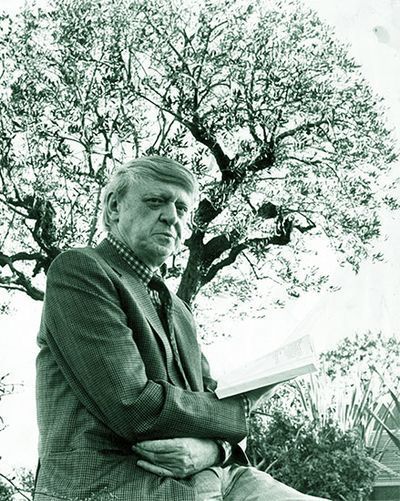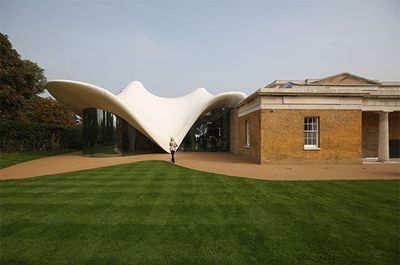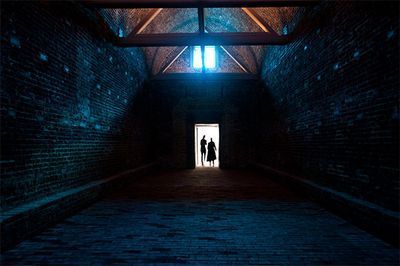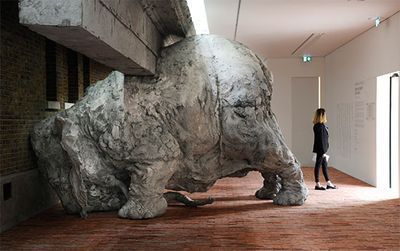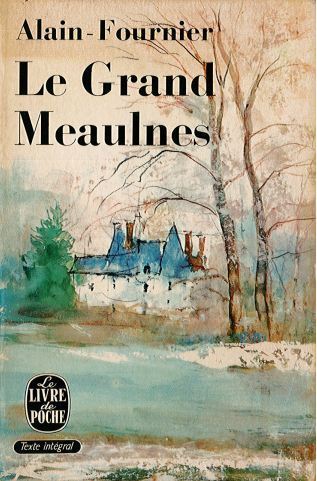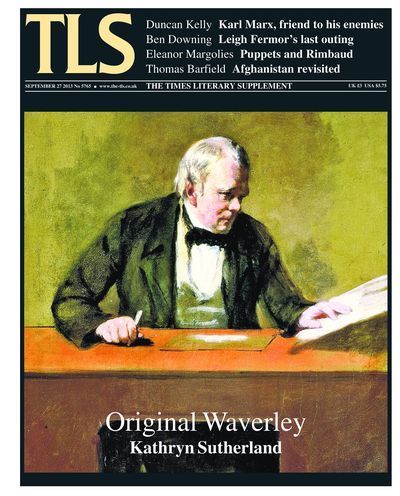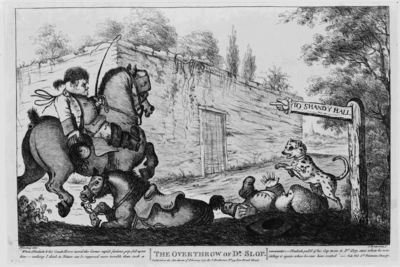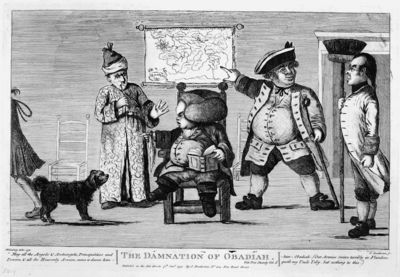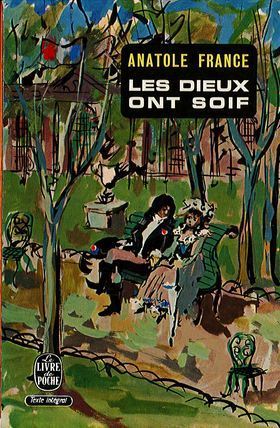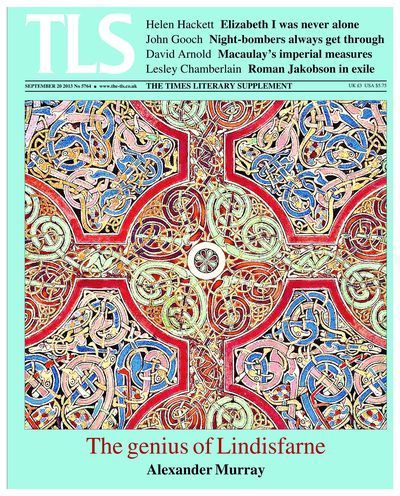Peter Stothard's Blog, page 54
October 3, 2013
In this week’s TLS – a note from the History editor

The human impulse to impose ourselves on our environment has inspired men and
women to build cities, to erect monuments, or to incorporate the animal
kingdom into our own rituals. This week, Thomas S. Hines considers a book by
Daniel Brook that takes four grand urban visions of the future, and sees how
they resulted in “four cities that would come to look and be like no others
in their surrounding cultures”. These versions of modernity all reimagined
western models in eastern settings. In Shanghai, the aim was to create “a
western city that just happened to be in the Far East”, whereas in Bombay –
the name the Portuguese coined, only replaced by the Indian version in the
1990s – the project was directed at the native, not the expatriate
population, to “create a new man who looked like an Indian but thought like
a Briton”. Such epic flights of fancy made victims, from the thousands of
serfs who died to build St Petersburg to the “coolies” on whose backs
Shanghai rose. But they also represented the birth pangs of a mixed, messy
modernity.
In Commentary, Graham Robb reveals a very different record of human
interaction with the landscape, one which, far from transforming it, “for
much of its course . . . exists only as an abstraction, an ideal trajectory
joining various sites”. This is the fabled Via Heraklea, which Robb has
traced on map and by bike. Despite his best attempts to disprove it, the
route also seems to track the angle of the rising sun at the summer
solstice, the sort of discovery that makes a reputable scholar worry that he
is suffering from “historical hallucination”.
Human encounters with the natural world take any number of forms, but it can
be argued that we have assimilated birds into our lives more thoroughly than
any other animal. To English-speakers, as Jeremy Mynott points out, birds
allow us to crane our necks, crow over misfortune or swan around. But
throughout the world, whether in the rituals of the tribes of Papua New
Guinea or the battery farms of Europe, we live with and through birds.
Mynott praises a “major literary event as well as an ornithological one” in
Mark Cocker and David Tipling’s Birds
and People.
David Horspool
October 2, 2013
A real good horrorshow
By MIKA ROSS-SOUTHALL
On holiday in the remote mountains of
Mallorca recently, I read Anthony Burgess’s A
Clockwork Orange, and for days
after finishing the book, had a recurring nightmare which involved a person with
a “Peebee Shelley maskie” violently hacking me into tiny, bloody bits. Maybe
I’m easily shocked, but the nightmares are a price worth paying for the experience of reading Burgess’s unexpectedly mind-blowing prose. The incidents that Alex,
the novel's school-boy narrator, describes are shocking; more so because of the book's disturbing language. Here’s how Alex and
his “droogs”, Georgie and Pete, rape a woman and attack her husband, a writer:
“He did the strong-man on the
devotchka, who was still creech creech creeching away in very horrorshow
four-in-a-bar, locking her rookers from the back, while I ripped away at this
and that and the other, the others going haw haw haw still, and real good
horrorshow groodies they were that then exhibited their pink glazzies, O my
brothers, while I untrussed and got ready for the plunge. Plunging, I could
slooshy cries of agony and this writer bleeding veck that Georgie and Pete held
on to nearly got loose howling bezoomny with the filthiest of slovos that I
already knew and others he was making up.”
In the TLS of April 22, 1965 (three years after the original, UK publication
of A Clockwork Orange), Burgess wrote
an article explaining his experimental style: “I wanted to write about possible
ways of dealing with the disease of juvenile delinquency, and I wanted the
story of one young thug’s rehabilitation to be recounted by the patient
himself. This, I thought, called for the use of teenage slang, and I began my
first draft in the coffee-bar idiom (most painfully learnt) of the day. But I
reflected that, by the time the book came out, the slang would already be out
of date . . . . A trip to Russia showed me that stilyagi behaved much like our own (as they were then) teddy-boys,
and I was struck by the notion of fusing the cognate images into one . . . by
manufacturing a composite language, a sort of Anglo-Russian dialect I called
(after the Russian “-teen” prefix) Nadsat.
Conservative by nature, I do not like strangeness for its own sake, and the
fact that my new slang could be justified in terms of a real foreign language
eased my embarrassment at having to write in it . . . . The title of the book
is A Clockwork Orange, taken by some
Americans as avant-garde clever-cleverness but, as any Cockney will know, as
native and traditional as Bow Bells”.
The author’s unfamiliar “slovos”
(words) are especially imaginative when it comes to describing body parts: “litso”
(face), “rot” (mouth), “zoobies” (teeth), “rookers” (arms and hands), “guttiwuts”
(stomach) and “glazzies” (eyes). “Droogs”
comes from Russian drugi, meaning
friends in violence. “Horrorshow”, from kharashó, the
neuter form of the Russian word for “good”, is used as a term of
approbation, like modern slang “wicked” and “sick”. The latter, incidentally,
is also used by Alex to express approval – an unintentionally prophetic stroke on Burgess's part.
For me, one of the best slang coinages is “sinny”
(cinema), apt given the evil Alex is forced to endure through films and also because
of what Burgess was later to feel about Stanley Kubrick’s film adaptation, released
in 1971. Burgess thought his novel’s unfamiliar language veiled the violence – nothing
is described outright, he leaves it to the reader’s imagination (which is often
more powerful) – whereas Kubrick’s film starkly realizes the incidents and Burgess’s wordplay is mostly lost.
An awareness of his novel’s potential
to do harm perhaps encouraged Burgess to write a letter to the Editor of the TLS in 1964 defending the work
of his friend, William Burroughs:
“if any writer is likely to rehabilitate an
effete form and show us what can still be done with a language that Joyce
seemed to have wrung dry, it is William Burroughs . . . . Unfortunately, too
many people who should know better protract a squeamishness about
subject-matter that sickens their capacity to make purely literary judgments. I
do not like what Mr. Burroughs writes about; for that matter I do not always
like what I myself write about: I was nauseated by the content of my A Clockwork Orange. There is . . . no
lip-smacking on the part of Mr. Burroughs when he works at the refining of his
raw material into art. Life is, unfortunately, life. Out of life we must
choose, for our writing, what will best stimulate us to write well. ‘Everything
that lives is holy.’ This may not be morally true, but it is true of the
subject-matter of literature. For heaven’s sake, let us leave morals to the
moralists and carry on with the job of learning to evaluate art as art”.
In his autobiography, Burgess suggested poor sales of A Clockwork Orange were probably
down to over-exposure – people didn’t feel they
needed to read the book, especially following the film. Yet Kubrick based his film adaptation on the American edition, which cuts the last chapter where Alex matures and reforms,
and then muses that the next generation will go through the same mayhem of adolescence,
“so it would itty on to like the end of the world, round and round and round”. The
US publishers, W. W. Norton, thought this ending wouldn’t appeal to
American readers; perhaps they didn't get the author’s subtle,
cyclical pessimism. (Burgess only accepted the cut
and the addition of a Nadsat glossary
for financial reasons, but in later reprints, he insisted on reinstating the last
chapter and dropping the glossary.) And another editorial oversight, this time from the English publishers, Heinemann: in
Burgess’s typescript, from which the original 1962 edition was taken,
an editor has written in the margin, “will this name be known at publication time?”, beside “Elvis Presley”.
Why read A Clockwork Orange now? Well, if you don’t, “bolshy
great yarblockos to thee and thine”.
October 1, 2013
Lectured by Leavis
By MICHAEL CAINES
F. R. Leavis had a not-very-soft spot for the TLS, at least in later years. Major or minor, real or imagined, slights and misrepresentations abounded, such as the paper's astounding folly in not welcoming East Coker as a work of heart-breaking genius (in fact, it gave Four Quartets little attention at all), and its general failure to kowtow before the throne of Scrutiny.
The mention of D. H. Lawrence or the incautious glossing of Leavis's views, could prompt a letter of rebuke, dutifully published in the next week's paper; his wife Q. D. Leavis joined in for good measure, once demanding an explanation from the Editor, following an "impenitent and impudent reply" from a reviewer. Then a bizarre, Leavis-baiting error occurred in 1955: a translated History of Switzerland appeared with the claim that he had written the "concluding pages". The publisher's abashed apology for their "printing error" appeared below Leavis's brief yet thoroughly contemptuous reply: "I must ask you to give publicity to the statement that I have never written any pages about Switzerland in any language, and that this use of my name is wholly unauthorized and unwarranted".
Uneasy relations did not prevent the occasional lecture by Leavis appearing in the TLS, but, according to Derwent May in Critical Times, Leavis "went on harassing and haranguing" the paper's mid-century Editor, Arthur Crook, "until the end of his editorship". This was not least because of the rematch with C. P. Snow this paper published in 1970, which returned to the same acrimonious battleground as the "Two Cultures?" debate of a decade earlier, only this time with Leavis throwing in a few "personal barbs", aimed at the Provost of University College London, Noël Annan, for good measure. Leavis almost found himself on the receiving end of a libel action for that. It was averted by Arthur Crook.
Understandably, in 1976, a TLS reviewer could write off Leavis as "our antediluvian polemicist"; and today, you might think, nobody would need to write him off at all. Instead, however, there are signs that interest in Leavis's views on literature, and the place of literary studies in universities, has revived rather than fallen off completely: David Ellis's Memoirs of a Leavisite and Cambridge University Press's new edition of Two Cultures?: The significance of C. P. Snow, with an introduction by Stefan Collini, have appeared this year (and will be reviewed in the TLS shortly); and the University of York holds a conference devoted to Leavis later this month, with an inaugural lecture by Christopher Ricks, following a similar (and most enjoyable) event in 2010. The organizers tell me that there is some serious interest in Leavis abroad, particularly in the Far East, and that there may be more events and publications in the pipeline.
Why the resurgence, if that is what this is? The explanation might lie in the Leavisian qualities identified in a TLS review of 1962, which identifies the wellspring of the critic's admirable qualities as well as his deleterious tendencies:
"As for Dr. Leavis [this follows an account of William Empson's "brilliant and exasperating" Seven Types of Ambiguity], The Common Pursuit contains some of his finest, as well as some of his most irritating, work. The prickly quality, the gracelessness which seems, even to his admirers, to disfigure much of his writing, springs from a genuine and full-blooded concern with standards, with the whole truth as he sees it, which has had a profound if complex influence on most of the younger, critics. . . . Perhaps more than anyone else he has made the rewriting of recent literary history not only desirable but necessary."
The Common Pursuit ends, incidentally, with a chapter called "The Progress of Poetry", which takes issue with a review of W. H. Auden's The Age of Anxiety – a review first published in – well, you know where.
September 27, 2013
Spoons in the Serpentine
By MIKA ROSS-SOUTHALL
A white-winged structure swoops
beside a nineteenth-century former gunpowder store in Kensington Gardens. It’s
the new Serpentine Sackler Gallery, which opens tomorrow (a five-minute walk
from the original Serpentine Gallery), and the distinctive design of the architect
Zaha Hadid. She has converted the grade II listed, neoclassical brick building
(“The Magazine”) into a gallery and created a membrane-roofed modern extension to
be used as a restaurant and social space.
“You don’t look forward by
looking backwards”, Hadid says, “you create structures that are adjacent and
juxtapose with historical buildings.” (Last night, the RIBA Stirling Prize 2013 was awarded to Witherford Watson Mann Architects for Astley Castle, a modern home inserted into the walls of an ancient castle.) The extension is certainly a twenty-first-century design. But the dynamic exterior is let down by the inside which feels like an airless white tent. The ceiling stretches high in the
centre; five columns, like upside-down Chinese soup spoons, support the billowing
domed roof and double as sky-lights. These are inspiring shapes, but the edges
of the structure claustrophobically envelop you. Where the roof curves to the ground
at three points, an overhang casts shadow on the cantilevered side-windows (and one
of the larger windows is mostly obstructed by the restaurant’s open kitchen). A
remarkable feature of the Serpentine Gallery is its positioning in the Royal
Park, yet the surrounding landscape is barely visible from inside.
The converted gallery space
is sensitively designed. A light, white cube encircles the two ready-made
vaulted rooms where gunpowder and munitions were kept during the Napoleonic wars.
Raw brickwork and beamed ceilings are exposed here, along with two very small
windows on either end of each chamber. So these rooms are dark, and perhaps
less versatile as display spaces, though they will probably stimulate more site-specific
work from artists.
Adrián Villar
Rojas, an Argentinean artist who is the first to exhibit in the new gallery, has
filled one of these vaulted “powder” rooms with an archive-like collection of
clay sculptures, found objects and living plants (including sprouting phallic
potatoes that nod towards Victor Grippo and the sculptural art tradition). All
are carefully positioned on towering glass shelves lit with brash strip
lighting, as if showcasing a fossilized history of humanity, perhaps from the
past, or perhaps a preserved future age. In the other “powder” room,
Rojas has put stained glass in the two windows, leaving the expansive space empty
and sacred. And throughout the gallery, the floor is covered with loose red
bricks (the whole space smells of damp earth) that beautifully clink underfoot,
and slow your pace, encouraging reflection.
In the white outer-ring
gallery, a huge clay elephant (below) carries a mock-up of the external façade
of the Sackler – is the elephant holding the old building up or is the animal
ramming it down? The same question can be asked of Hadid’s design interventions on the old building.
At the original Serpentine
Gallery sculptures made from raw materials by the Italian artist Marisa Merz also reflect the
fragility of the human condition. One installation, undated and untitled, features
nine clay pin-heads with searching faces on a square paraffin tray. Without any
indication of scale, they could be planets in the universe or stars in the sky.
A feeling of insignificance and anonymity, yet some of the heads flash with gold leaf.
The directors and curators
have thought carefully about the dialogue between Merz and Rojas’s exhibitions.
And an umbilical cord (the “Bridge Commission”) will always link the two
galleries. This year the focus is on literature – every month a new short story,
lasting the five minutes it takes to walk from one gallery to the other, will
be available as an audio download on visitors’ mobile phones. Twelve authors have been commissioned, including Ben Lerner, Adam
Thirlwell, Chimamanda Ngozi Adichie, Luisa Geisler and John
Jeremiah Sullivan; the
first story is by Valeria Luiselli.
The Serpentine is a mushrooming campus
of culture and experimentation. Earlier in the summer I wrote
about Sou Fujimoto’s breath-taking Serpentine pavilion. It was a joy
to walk past it again this week. I don’t think I’ll be saying the
same about Hadid’s extension.
September 26, 2013
French literary anniversaries, part 2
By ADRIAN TAHOURDIN
French literary anniversaries seem to be coming thick
and fast (and francophobes should stop reading this now). I mentioned last week
(September 19) the forthcoming Proustian landmark in November – more on that nearer the
time. November 7 will
see the centenary of Albert Camus’s birth. And before those two dates we have,
in October, the hundredth anniversary of the publication of
Alain-Fournier’s only novel Le Grand
Meaulnes – an excuse for my second reproduction of a Livre de Poche cover in a week.
As is
well known, the author was killed in action on the Meuse in September 1914 at
the age of 27. Less well known is the fact that a promising fragment of a
second novel, Colombe Blanchet,
appeared in 1990; or that Alain-Fournier lived in Turnham Green in west London
for a while (working in a wallpaper company); or that he changed his name from
Henri Fournier to Alain-Fournier so as not to be confused with the champion
cyclist Henri Fournier; or that it took until 1991 for his remains to be
formally identified.
Le Grand Meaulnes always appears high on any
list of great c20 French novels, and is probably still a staple for lycée students; not everybody was
enchanted by it: Anne Duchêne once
referred to it in the TLS as “that
rather tiresome classic”. I suspect it appeals to adolescent males more than
any other group of readers, but there’s no denying the classical beauty of the
writing. It has that indefinable quality, timelessness.
J. C. suggests
(NB, September 27), in an item on the sixtieth anniversary of the Livre de Poche, that
it’s ”an essential text for the debutant lecteur”.
The arrival in the office of a Centenary Edition (published by Oxford
University Press on October 7, £12.99/$19.95), with an introduction by Hermione
Lee, prompted me to have a look at the available translations.
There
are at least four to choose from: Valerie Lester’s The Magnificent Meaulnes (2009,
Vintage), R. B. Russell’s liberty-taking if occasionally inspired (but poorly
proof-read) version for Tartarus Press (1999), the late
Robin Buss’s 2007 translation (The Lost
Domain, Penguin Classics). And then there’s the new Oxford edition, with a translation
by Frank Davison, which dates from . . . 1959. It was the Penguin edition until
Buss’s version replaced it. Confusing, isn’t it?
Partly out of a sense of loyalty to Robin Buss, who was
a model reviewer for the TLS over
many years, I’m prompted to suggest that his is the best. Buss was a skilled
translator, from Dumas to his near-anagram Camus. Our reviewer David Coward
called his Lost Domain (Buss’s last
translation) “lyrical”, which seems an apt adjective. It’s certainly the most
direct and precise. Davison’s strikes me as broadly eccentric: phrases
such as “an abode from which our adventurings flowed out” don’t really float my
boat, and distort the original: “demeure d’où partirent et où
revinrent . . . nos aventures”. It might
have been an idea to revise it.
In this week’s TLS – a note from the Managing Editor
Few writers have been so deeply involved in the business of writing as Sir
Walter Scott. Described by Thomas Carlyle as “a Novel Manufactory”, Scott
oversaw a production line employing many hands – amanuenses, house readers,
compositors, and his business partner, James Ballantyne – not to mention the
fictitious “pseudonymous editor-historians” in the novels, and his own later
re-editing of his “grande opus”. This makes the task of reconstructing an
“authentic” version of the Waverley novels a challenging one: Kathryn
Sutherland respects the diligent case-by-case negotiations evident in the
new Edinburgh Edition.
Scott, Sutherland writes, “invented the historical novel in its modern form”.
History creates its own fictions and dramas as it evolves. Thomas
Barfield reviews a number of recent books on Afghanistan, and notes that
a focus on leading figures or dramatic turning points (occupation, surge,
withdrawal) sometimes obscures a messier truth: a world of many actors with
diverse motives, also in need of delicate case-by-case negotiation. Stephen
Lovell reviews 1990, which examines Russian society in a year of
transition, but wonders if that year was a genuine turning point, or just a
useful snapshot from a longer, more awkward transition.
Decades earlier, Russia had withdrawn from Austria, leaving “a symbolic cache
of arms and tanks” as a gift and covert threat. The Austrians reciprocated
by giving the Russians a report from the 1850s made by one of the Austrian
spies who had been monitoring the exiled Karl Marx. As Duncan Kelly points
out, reviewing a new biography of Marx, the fervent Communist was, for some
of the time, an unwitting puppet of his enemies in Vienna.
In Commentary this week, Eleanor
Margolies investigates an intriguing link between real puppetry and Arthur
Rimbaud. Charleville-Mézières, Rimbaud’s hometown, is home to the
world’s largest puppet festival, as well as the Institut International de la
Marionnette; but the connections, Margolies argues, go much deeper than
that.
Robert Potts
September 25, 2013
Sterne season
By MICHAEL CAINES
“As my life and opinions are likely to make
some noise in the world, and, if I conjecture right, will take in all ranks,
professions, and denominations of men whatever, – be no less read than the
Pilgrim’s Progress itself – and, in the end, prove the very thing which
Montaigne dreaded his essays should turn out, that is, a book for a
parlour-window; – I find it necessary to consult every one a little in his
turn; and therefore must beg pardon for going on a little farther in the same
way: For which cause, right glad I am, that I have begun the history of myself
in the way I have done; and that I am able to go on tracing every thing in it,
as Horace says, ab Ovo.”
The author of “this humorous rhapsody” did not,
of course, come to the birth of his hero, Tristram Shandy, until three volumes
into his great work – but Laurence Sterne himself was born on November 24,
1713, three centuries ago – so a season of suitably quixotic celebrations is
about to begin.
Up at Shandy Hall, the house in Coxwell that
Sterne moved into the year after the publication of the first two volumes of The
Life and Opinions of Tristram Shandy, Gentleman, the celebrations began a while
ago, but they continue this Friday with an “educational event” on how to get
drunk eighteenth-century style. They continue in York Minster with Voice from
the Pulpit on October 14, inspired by Sterne/Yorick’s final sermon, with the
premiere of a new work by David Owen Norris – there’ll be a different
educational element on that occasion, in that four school choirs are due to
participate.
Closer to the tercentenary itself, on November
20, there’ll be a “Shandyfest” at King’s College London, involving “talks,
performances, ingenuity and fun”, and, it’s a fair bet, some laudatory remarks
from the usual corners of the newspapers.
As people and Penguins (Penguin Classics, that
is) like to point out, Samuel Johnson seemingly got it wrong when he said that Tristram
Shandy was an oddity that would not last; the coming commemorations show
that it’s “lasted” long enough to still be read around the time of Sterne’s
300th, and recognized as an ancestor of certain experimental, playful
approaches to storytelling. Eminent admirers include Marx, Goethe and that
other novelistic devourer of encyclopaedic knowledge James Joyce.
Suitably quirky forms of admiration would
include Shelley taking the adjective “Slawkenbergian” from Sterne’s “great and
learned” authority on noses (one of the many mock-authorities mixing with real
ones throughout the book), to describe the “prodigious” conk of somebody he
disliked. “I, you know, have a little turn up nose”, he added, “Hogg has a
large hook one but add both of them together, square them, cube them, you would
have but a faint idea of the nose to which I refer.”
You can find Leigh Hunt, meanwhile (or in my
case via Dr Bowdler’s Legacy by Noel Perrin), carrying out a “chastening”,
as he called it, of Sterne for his Classic Tales, Serious and Lively in
1806. Knowing full well what Sterne was sometimes getting at, but comically
disguised for the broader humour of his contemporaries, Hunt could only bring
himself to include “three snipped-up passages” from Sterne in his five-volume
publication. Hunt’s selection, devoid of “vulgar sportiveness” was still doing
the rounds, according to Perrin, at the end of the century.
Can a whiff of that wariness still be detected
as late as 1927, when Herbert Read, writing in the TLS, called it “odd”
that A Sentimental Journey “should have had to wait for the 796th place
a popular reprint of the classics”? Even better, perhaps: Sterne doesn’t
feature at all on a list of the “hundred best novels” (of which more soon, I
hope) as they appeared to a literary critic in 1898. Imagine having room on
your shelf for Black but Comely by G. J. Whyte-Melville and The
Collegians by Gerald Griffin but not Tristram Shandy. (Of course, the
modern shelf has room for all three . . . .) And even now, as one critic
observes, is Sterne “better known read”?
Enough of these “whiffling vexations”. Here’s
what the late David Nokes had to say about how Europe received Sterne’s magnum opus, among other works –
beginning not ab Ovo, but with Marx’s imitation of Sterne, and ending
with a disquieting return to Johnson’s dismissal.
“–and so the chapter ends.”
September 19, 2013
Anatole France and Proust
By ADRIAN TAHOURDIN
A new translation of Anatole France’s
novel Les Dieux ont soif is being
published next month by Alma Classics, as The
Gods Want Blood. First published in 1912, the book is set during the Terror
of 1793–4 and features, fleetingly, both Marat and Robespierre. As its
translator Douglas Parmée
writes in his introduction, the novel has contemporary resonance: its main
character, the mediocre painter (pupil of Jacques-Louis David) and
revolutionary fanatic Évariste
Gamelin “would surely make a first-rate suicide bomber”. France did his
research thoroughly, with the result that his novel, in Parmée’s words, “bears
throughout the stamp of historical authenticity”.
The publication seems timely: the
elegant, epicurean Anatole France counted among his admirers one Marcel Proust,
whose work celebrates a rather significant anniversary this November. The first
part of his great novel, Du Côté de chez Swann, was published in
November 1913. Proust had devoured France’s work. In her recent Monsieur Proust’s Library
(which I reviewed in the TLS earlier this year), Anka Muhlstein wrote “France’s “style and interests are very similar to the
ones attributed to [Proust’s] fictional writer” Bergotte.
She also pointed out
that “When he was still in school, Proust admired France with a passion that
recalls the Narrator’s at that age for Bergotte. Although he did not know him,
he wrote Anatole France a veritable fan letter after reading a nasty review of
one of his books”. One of Proust’s biographers Jean-Yves Tadié reveals that
Proust “went so far as to plant real France sentences in passages of Bergotte’s
prose”. France wasn’t of course the only model for Bergotte; it’s been
suggested that he was a composite of France, the orientalist novelist Pierre
Loti and John Ruskin – and let’s not forget that the novelist’s own powerful imagination
was at work.
France wrote a brief, rather perfumed preface for
Proust’s early publication Les Plaisirs
et les jours (1896), a collection of stories, poems and observations:
“Marcel Proust delights equally in describing the desolate splendour of the
sunset and the agitated vanities of a snobbish soul”. He noted the author’s “marvellous
spirit of observation, and a supple, penetrating and truly subtle
intelligence”.
According to Muhlstein, Proust’s “enthusiasm for
France’s work . . . waned over the years”, but “their friendship endured,
strengthened by their common fight for Dreyfus”. Later France was to write of
the younger novelist, “I’ve tried to understand him, and I haven’t succeeded.
It is not his fault. It’s mine”.
The new translation of Les Dieux ont soif will be reviewed in a forthcoming issue of the TLS.
September 18, 2013
In this week’s TLS – A note from the History editor
The sumptuous book now known as the Lindisfarne Gospels led a peripatetic life
in the two centuries after its creation, but it rarely travels these days.
It has survived in near perfect condition (minus original binding) for
around 1,300 years, and as Alexander Murray writes, its conservators at the
British Library have decreed that “no page may be exposed more than once in
five years or for more than three months at a time”. But Durham, the city
with which it was long associated and where, up until the Dissolution of the
Monasteries, it resided, is a special case. The book has been lent out to
feature as the main attraction in an exhibition at Durham University’s
Palace Green Library. The show not only displays some of the masterpieces of
early medieval art but, as Murray finds, does so “in the highly instructive
company of related manuscripts and artefacts”.
Luckily, the Lindisfarne Gospels avoided the fate of many other early English
treasures, of being looted by Viking raiders. But war has always made
cultural casualties. In the case of the air war over Europe, it was long
argued that Allied attacks on places of cultural rather than military
significance, such as Dresden, were responses to German escalation of the
air war to include attacks directed at civilian morale as well as materiel.
Reviewing Richard Overy’s impressive history of The Bombing War,
John Gooch concludes that, on the contrary, “we started it”, switching the
focus of raids to “heavy material destruction in large towns” in 1940. This
was a case, Overy argues with an Orwellian flourish, of “pre-emptive
retaliation”.
If that overturns one widely held misconception about Germany, a much more
curious feature of German life is the subject of a book by H. Glenn Penny,
reviewed by Peter Pfeiffer. The Germans have a long-held affinity, it turns
out, for Native Americans. Evidence for this comes not only in the form of a
history of self-identification traceable back to Tacitus, but in some of the
most popular German books and films, particularly those of Karl May,
featuring “Old Shatterhand” and his Apache friend, Winnetou.
David Horspool
September 17, 2013
Turning Japanese
By MIKA ROSS-SOUTHALL
While on a trip to Japan in the early 1980s, the President of the United States, Jimmy Carter, made a pun.
After a short hesitation his interpreter translated the witticism into Japanese. The Japanese audience burst into excessive laughter, which later prompted the President to ask
the interpreter what exactly he had translated. Was his pun really that humorous? The interpreter admitted that, instead of attempting to translate the pun, he had simply said in Japanese: “the President
of the United States has made a pun. Please laugh”.
Here lies a crucial problem in
translation: how do you translate idiom and wordplay? Last night Sandra Smith (Irène Némirovsky's English-language translator) treated us to the anecdote at a Royal Society of Literature talk on translation, chaired by Adam Thirlwell (whose most recent book Multiples, reviewed in this week’s TLS, collates 12 stories, translated in and out of English and 17
other languages by 61 authors). Also in attendance were the writer and francophile, Julian Barnes,
and the novelist, Ali Smith.
The discussion began with each providing a previously prepared translation (i.e. subjective interpretation) of Nicholas
Chamfort’s aphorism, “Vivre est une maladie dont le sommeil nous soulage toutes
les seize heures. C’est un palliatif; la mort est le remède”. Their translations differed markedly in voice and style. Some were
freer than others; some focused on retaining the rhythm and balance of the sentences.
(Thirlwell finally revealed Samuel Beckett’s translation: “sleep till death / healeth
/ come ease / this life disease” – as Barnes commented,
Beckett had gone “quite biblical”.)
Apart from the more obvious challenges of translation
(including whether a translation corrupts the original text), interesting ideas were raised about the dialogue between an
author and translator. How much influence should an author have over their
translation? “I’m just flattered they’re bothering to translate my work in the
first place”, said Ali Smith. But all agreed that a good
translator taps into a country’s culture, adapting the author’s style to allow the work to resonate in the new language.
Translations are part of a text's afterlife; just as a reader’s interpretation is an ongoing process, no particular translation can ever be ultimate and complete (texts ought to
be translated at least every 50 years as readers and languages evolve, it was agreed). Ali Smith referred us to Muriel Spark’s poem, “Authors’ Ghosts” (2004), in which the
speaker suggests that dead authors “creep back / Nightly to haunt the sleeping
shelves / And find the books they wrote” and “put final, semi-final touches, /
Sometimes whole paragraphs . . . How otherwise / Explain the fact that maybe
after years / have passed, the reader / Picks up the book – But was it like
that? / I don’t remember this”.
Thirlwell talked about the
first time his novel Politics (2003) was
translated into Swedish. The translator asked him about specific words, such as
his use of “grandmother” – did he mean the character’s maternal or paternal grandmother? There are precise words for both in Swedish, but Thirlwell had no idea. He thought about it and gave an answer. And so his novel became more realized in its Swedish version.
The title of a book often poses the
most difficult challenge for a translator. Ali Smith’s recent novel There but for the (2011) has proven especially
hard. And so she allowed her translators to drift away
from a too literal translation of her words. It seems there are no rigid rules for translation.
After all, as Julian Barnes forcefully argued towards the end, you would never give Gustave Flaubert’s Madame Bovary
the title Mrs Bovary in its English incarnation.
Peter Stothard's Blog
- Peter Stothard's profile
- 30 followers


